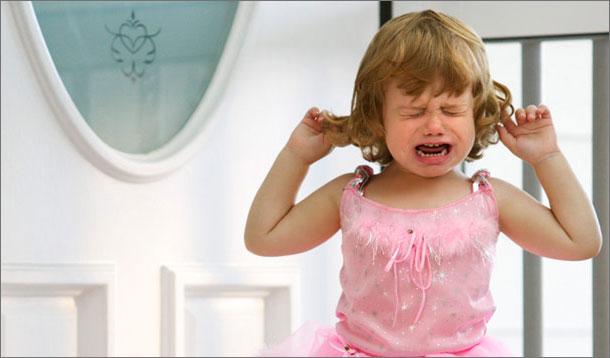
We've all been there, knee-deep in the trenches of toilet training. It's not pretty. And yet we all manage to come through it with scars and plenty of gory tales. Still, it's a battle that most of us have the good sense to keep contained within our own four walls. Right?
But there's always one... According to an article in the Huffington Post, a Utah mom horrified the net as footage of her two tots sitting on a potty chair—in the middle of a restaurant—went viral.
Let's just allow that image to sink in a little, shall we? Bare bums on potty chairs. In the middle of a restaurant. Where people eat food.
Gobsmacked spectator to the horror shock, mom of three Kimberly Decker's photo of the incident has since been taken down, since the tots were nude from the waist down muching their chicken nuggets.
In the article, shocked commenter Ad8835 reminded the anon mom that her children "are not animals - they are small versions of you!" while others doubted the veracity of the footage, suspecting it had the markings of Punked or a similar candid camera TV show written all over it.
Bad enough to see boys (and grown men) 'watering' trees in public. But if it's legit, this story brings new meaning to the adage, "don't sh*t where you eat."
Any disasterous incidents while training in public? Spill, you know you want to...

An outraged family plans to sue an airline after their teenage son with Down Syndrome was denied entry onto a first-class flight, according to an article in the Huffington Post.
Although Joan and Robert Vanderhorst have flown countless times with their son, 16-year-old son Bede, they decided to splurge an extra $625 to treat Bede to a first-class experience.
Yet the family's excitement was quickly replaced with shock when an American Airlines representative pulled them aside, saying Bede couldn't board because he posed a "flight risk" to the pilot since their seats were near the cockpit.
Though the family claims he was calm in the waiting area, the airline claimed the teen was 'agitated' and running around the gate area, and therefore deemed "not ready to fly."
Surprisingly, the Vanderhorsts claim this is the first time they have faced discrimination on a flight.
"My son is no different from a 4 or 5 year old as far as behavior," said Mr Vanderhorst, who denies in the article that his son was running, shouting or causing any other distractions. "It was horrible, humiliating. We were treated like criminals."
Not only was the family escorted to the rear coach section, they were apparently not issued with a refund for the cost of the upgrade. Other families with young children have also been kicked off of planes: the two year old who threw a tantrum, and the family with four children, and the 18-month-old Muslim baby apparently registered on the no-fly list.
Increasingly, airlines are taking liberties with passenger freedoms. Witness the highly subjective dress code restrictions...
Are airlines well within their rights to call the shots and refuse passengers entry if they suspect security might be compromised? Or has post-9/11 paranoia neutered all common sense?

Research from the Northwestern University Feinberg School of Medicine (NUFSM) will have you breathing a huge sigh of relief. It seems our kids aren't tantruming nearly as often we think. The new study, published in The Journal of Child Psychology and Psychiatry, also gives key insight into which kinds of misbehaviour are typical or those that are cause for concern.
In a new questionnaire called the Multidimensional Assessment of Preschool Disruptive Behavior (MAP-DB), parents of almost 1,500 preschoolers between ages three to five responded to questions about their child's tantrums in a given month.
While tantrums were common among this age set, fewer than 10 percent of the children were melting down daily, regardless of gender, ethnicity and socioeconomic status.
"We have defined the small facets of temper tantrums as they are expressed in early childhood," said Lauren Wakschlag, lead author of the study and professor and vice chair in the department of medical social sciences at NUFSM. "This is key to our ability to tell the difference between a typical temper tantrum and one that is problematic."
While a 'typical' tantrum might happen when a child is tired or frustrated during daily routines such as at bedtime, mealtime or getting dressed, an 'atypical' tantrum seems to occur out of the blue and is so intense that the child is exhausted afterwards. If atypical tantruming happens regularly, it may be a red flag of some other clinical condition.
"Pediatricians are hampered by the lack of standardized methods for determining when misbehavior reflects deeper problems and so may miss behaviors that are concerning. This is why it's so crucial to have tools that precisely identify when worry is warranted in this age group."
Researchers are hoping the MAP-DB will become the standardized "first step" that will enable parents and pediatricians to spot the early signs of mental health problems in children.